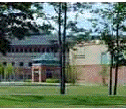|
Effects of Charge
Methods of Measuring Particle Adhesion
- Centrifugation.
- Better on large (R>20 mm)
- Slow
- Well established technique
- Minimal interactions
- Good statistics
- Electrostatic Detachment
- Medium to large particles (R>5 mm)
- Interaction with electric field
- Good statistics
- Hydrodynamic detachment
- Small particles (R<0.5 mm)
- Good statistics
- Introduces a fluid
- Atomic force techniques
- Measures attractive as well as removal force
- Can exert precise loads on particles
- Short and variable time scales
- Can distinguish force mechanisms
- Poor statistics
- Contact area technique
- Good statistics
- Forces not directly measured.
- Equilibrium measurement
- Need spherical particles
- Wide range of particle sizes
- Nanoindentor
- Easy to interpret measurements
- Readily repeatable
- Simulation of particle adhesion rather than actual measurement.
- Israelachvili Surface Force Apparatus
- Uses crossed cylinders rather than particles
- Cylinders can be coated with materials of interest
- Simulation of particle adhesion
|











































